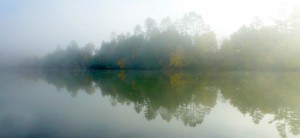Friday
Dharma TeachingsEmbodying Wisdom, Becoming Sensational
 Exploring the Five Wisdoms
Exploring the Five Wisdoms
by Irini Rockwell
A sensuous sixteen-year-old dancing; a couple in sexual union: ultimate wisdom and enlightenment are personified in the iconography of the Vajrayana Buddhist tradition by just such deities. They live in palaces, and offerings of sense pleasures are bestowed on them. Vajrayana Buddhism brings each of us into the immediacy of the world and celebrates sense perceptions as inherent gifts. As Chogyam Trungpa Rinpoche once said, “Mingle oneself with the mirage of sounds, colors, shapes, energies and emotions. Mingling is… a kind of celebration. There is joy, a dance taking place.” What could be farther from our Western assumptions about wisdom?
For Vajrayana Buddhism, our sense perceptions are an entrance into the Five Wisdoms, energies or qualities that are reflected in our personality, emotions, relationships, and all aspect of the phenomenal world. As our antenna to the world, sense perceptions tune us in to the energies of the wisdoms, and, as each energy transmits the world in a different way, they are the key to five fields of awareness. When seeing, hearing, smelling, tasting, touching, we experience ourselves differently, and distinct aspects of our world are opened.
 In the early 1970s Trungpa Rinpoche introduced a way of approaching the Five Wisdoms, traditionally known as the five Buddha families, which made them accessible to Buddhists and non-Buddhists alike. He designed five rooms, each with its own color and window shape. In each room the student is directed to lie in a specific posture. The combination of space, color, and posture evokes and intensifies one of the five basic energy patterns. The five postures are also practiced as a group wearing colored glasses. It is part of Trungpa Rinpoche’s genius to present esoteric tantric teachings in an immediate and direct way accessible to anyone.
In the early 1970s Trungpa Rinpoche introduced a way of approaching the Five Wisdoms, traditionally known as the five Buddha families, which made them accessible to Buddhists and non-Buddhists alike. He designed five rooms, each with its own color and window shape. In each room the student is directed to lie in a specific posture. The combination of space, color, and posture evokes and intensifies one of the five basic energy patterns. The five postures are also practiced as a group wearing colored glasses. It is part of Trungpa Rinpoche’s genius to present esoteric tantric teachings in an immediate and direct way accessible to anyone.
 The following descriptions capture aspects of the Five Wisdoms energies: their colors, their capacity to bring us into wisdom and reveal our confusion, the sense perception associated with each, and the ways in which we embody them.
The following descriptions capture aspects of the Five Wisdoms energies: their colors, their capacity to bring us into wisdom and reveal our confusion, the sense perception associated with each, and the ways in which we embody them.
• The vajra family reflects a blue energy like a crystal-clear mirror. Vajra energy reflects what it sees without bias: this is its wisdom quality. It sees the big picture and is able to discriminate the particulars of what is happening in a situation. When it becomes self referential, it has a self-righteousness that can harden into a withdrawn cold or hot blaming anger: its confused quality. Associated with seeing, it is embodied in the forehead and chest. When we focus intently on seeing — as in taking a photograph or working at a computer — we are relating to the world in a vajra way.
• The ratna family exudes an earthy golden yellow energy that encompasses everything. The wisdom quality of ratna energy is richness, equanimity, and a sense of deep satisfaction, feeling utterly fulfilled. However, when it becomes all about me, it can have an underlying sense of self-pity and poverty mentality which is covered over by a sense of greedy territoriality and puffed-up pride. It is associated with smelling, tasting, and sensuous touch, and is embodied in the mouth, stomach, and skin. When we fully focus on smelling and tasting — as while cooking and eating — we enter a ratna world. We all know how satisfying and nurturing it is to smell and eat good food. In ratna, touch has everything to do with the sensations of our body. We experience this when touched by another or by developing our awareness of our body. Sitting meditation – or any other contemplative discipline — is a way of touching from the inside. Thus the three sense perceptions associated with ratna are visceral. We experience them deep within our body.
 • The padma family glows with the vibrancy of red energy. Padma energy is, at its best, compassionate wisdom. It has a keen, intuitive sensibility that experiences the minute particulars of the moment in a heartfelt way. Finely tuned in to what is happening, it discriminates experience without bias. However, when it is self-serving, it can cling obsessively to what gives pleasure. It wants the best and manipulates the world to get it. It is associated with hearing and is embodied in the eyes, mouth, neck, hands, and genitals. What is meant by “hearing” is sensing the vibrations of a person or situation. It has to do with resonating with people and places, intuitively sensing the energetic — or emotional — landscape. It is an attunement that picks up vibrations in the outer world which strongly effects our inner world. Music can change our mood quite dramatically. Speech — in poetry, politics, or theatrical performances — can have the same effect.
• The padma family glows with the vibrancy of red energy. Padma energy is, at its best, compassionate wisdom. It has a keen, intuitive sensibility that experiences the minute particulars of the moment in a heartfelt way. Finely tuned in to what is happening, it discriminates experience without bias. However, when it is self-serving, it can cling obsessively to what gives pleasure. It wants the best and manipulates the world to get it. It is associated with hearing and is embodied in the eyes, mouth, neck, hands, and genitals. What is meant by “hearing” is sensing the vibrations of a person or situation. It has to do with resonating with people and places, intuitively sensing the energetic — or emotional — landscape. It is an attunement that picks up vibrations in the outer world which strongly effects our inner world. Music can change our mood quite dramatically. Speech — in poetry, politics, or theatrical performances — can have the same effect.
• The karma family emits a green energy, swift and energetic like the wind. Karma energy in its wisdom aspect is all-accomplishing action for the benefit of others. It is timely, efficient, and uses the most up-to-date technology. It has a sense of power. But it can also become self aggrandizing power, manipulative, competitive, and envious. It is associated with functional touch, and embodied in the limbs. When we swing an ax, kick a ball, or put our foot on the gas pedal, we are in karma family. Karma energy is about taking action to make things happen.
• The buddha family radiates a white energy, spacious and peaceful. Buddha energy is an all-pervasive, peaceful space, accommodating all in an unbiased way; this is its wisdom quality. From this place of just being, everything seems okay. It can also be solidly immobile with the density of ignoring or denying. It has no sense perception and is embodied in the top and back of the head. Buddha energy has no particular way to connect to the world through a sense perception. However, because it is open to receiving all of the senses, it acts like a switchboard, a receptor, for the other energies.
There are times in our lives when we come back to simply being here in the moment: it is inherently good and wholesome to let ourselves just be. Without the conceptual filter of “me,” the environment is nourishing because we let it touch us rather than trying to control or manipulate it. We can have a gentle relationship with our surroundings — as when sitting in a park on a sunny day with the breeze catching the leaves of the birch trees, the children playing by the lake, and the bikers going by.
 When we are fully present, we are receptive to the phenomenal world around us. Opening to sense perceptions, we become a sensate being, embodied. Being fully present, when we look, we actually see; when we listen, we hear; when we smell and taste, we savor; when we touch, we truly feel. Connecting to the phenomenal world in this way is the key to contacting reality directly, beyond concept. We are able to experience the play of energies that is life itself.
When we are fully present, we are receptive to the phenomenal world around us. Opening to sense perceptions, we become a sensate being, embodied. Being fully present, when we look, we actually see; when we listen, we hear; when we smell and taste, we savor; when we touch, we truly feel. Connecting to the phenomenal world in this way is the key to contacting reality directly, beyond concept. We are able to experience the play of energies that is life itself.
Most often, however, we are preoccupied, and paper over our experiences with expectations, projections, and story lines. Unable to stay with the present moment, we are closed to the world. Our perceptions become cloudy and dull. Fear and anxiety underlie much of this habitual distortion: before an experience fully emerges we feel compelled to name it, as if we must solidify it. At once, the experience eludes us.
Trungpa Rinpoche taught meditation, perception, and artistic expression as an approach that is not just about art but a way of life. He talked about artistic sensibility as ongoing and all-pervasive. When we tune in to the world by fully experiencing our sense perceptions, we experience it as powerful and magical. When we are being fully who we are — sensual, emotional, insightful — we respond with a creative gesture. Whether we are writing poetry, designing a house, planning an event, or choreographing a dance, the five fields of awareness provide a rich resource. Being creative is simply letting our energy flow through us with attention. As is said in Bali, “We have no art; we do everything as well as possible.”
 Our sense perceptions invite us to enjoy life fully. By learning how to look, we discover how to see; by learning how to listen, we discover how to hear; by learning how to feel, we discover our sensate self. Here is a three-stage process for experiencing sense perceptions more fully:
Our sense perceptions invite us to enjoy life fully. By learning how to look, we discover how to see; by learning how to listen, we discover how to hear; by learning how to feel, we discover our sensate self. Here is a three-stage process for experiencing sense perceptions more fully:
1. Sense of being: Establish a sense of being in the moment. Take in a deep breath and let it go. Let it cut through the cloud of distraction and preoccupation and bring yourself into the present moment.
2. Sense of connecting: Quickly engage one of your senses: look at a tree, hear a bird, touch a stone. Be inquisitive.
3. Sense of merging: Establish communication: linger and allow it to enter; join your being with it in dynamic oscillation. A dialogue begins, back and forth, without language.
Try the exercise at any time. Or take a walk, and if with a friend, don’t talk: to heighten sense perceptions other than sight, allow your friend to guide you while blindfolded. Keep your feet on the ground, and feel the atmosphere around you.
Cultivating understanding of our senses puts us in touch with the energies at play: we are each unique and the energies manifest within each of us uniquely. Allowing ourselves to experience our sense perceptions fully in the present moment, the range of energies expands and deepens.
We begin to become truly sensational.
~~
 Irini Rockwell, MA, is director and principal trainer at the Five Wisdoms Institute and a senior teacher in the Shambhala community. She has presented trainings internationally for over 30 years working from her books The Five Wisdom Energies: A Buddhist Way of Understanding Personalities, Emotions, and Relationships (in 10 languages) and Natural Brilliance, a Buddhist System for Uncovering Your Strengths and Letting Them Shine. She holds a Master’s in Contemplative Psychotherapy and a certificate in Authentic Leadership from Naropa University where she was director of dance and dance therapy. For more on the Five Wisdoms: www.fivewisdomsinstitute.com
Irini Rockwell, MA, is director and principal trainer at the Five Wisdoms Institute and a senior teacher in the Shambhala community. She has presented trainings internationally for over 30 years working from her books The Five Wisdom Energies: A Buddhist Way of Understanding Personalities, Emotions, and Relationships (in 10 languages) and Natural Brilliance, a Buddhist System for Uncovering Your Strengths and Letting Them Shine. She holds a Master’s in Contemplative Psychotherapy and a certificate in Authentic Leadership from Naropa University where she was director of dance and dance therapy. For more on the Five Wisdoms: www.fivewisdomsinstitute.com




